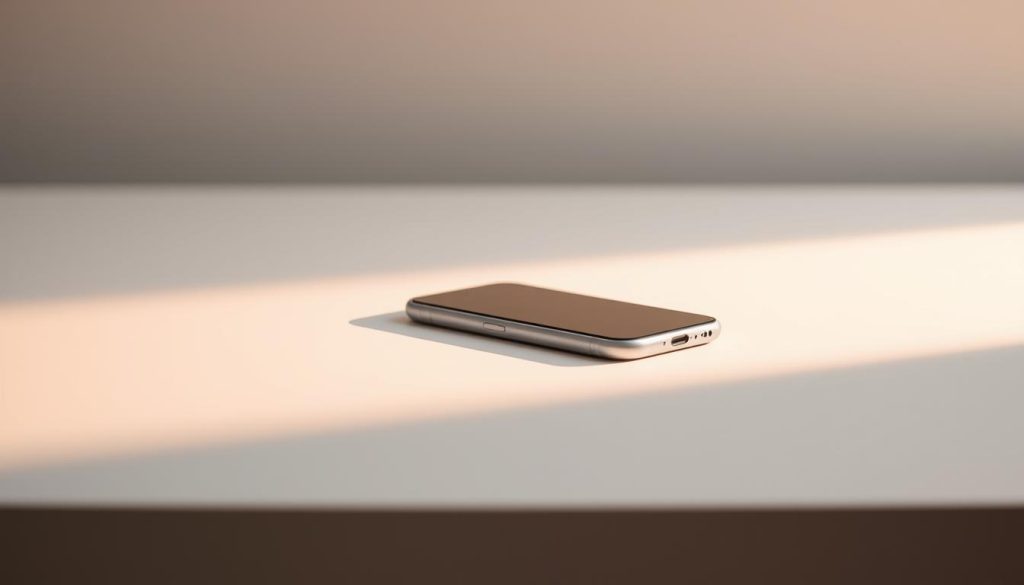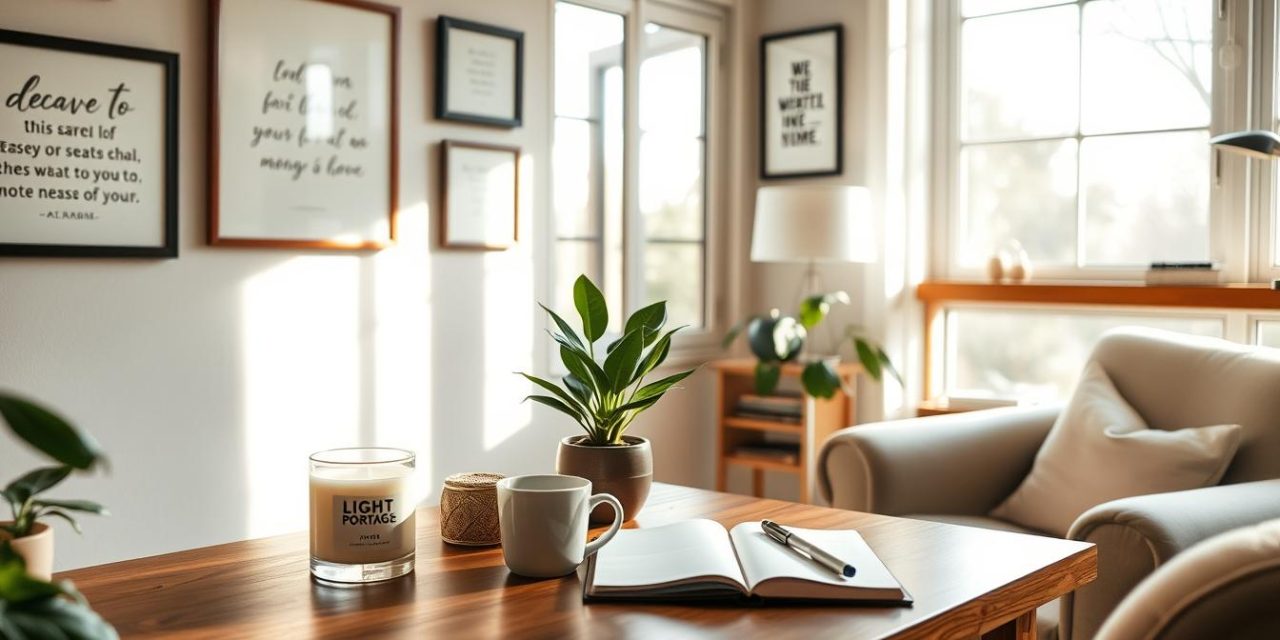We know the rhythm of freelance life: a call, a deadline, and a cup of coffee to bridge the gap. One afternoon, a friend rang while I sat with a cold mug and a long to-do list. The three-minute chat reset my mood and reminded me that small actions change the day.
This guide offers practical ways to protect your health and mental health without overhauling your schedule. Expect short activities you can do between meetings, like gratitude journaling, light strength moves, or a 30-second cold finish in the shower.
We provide structured support for environment, body, and mindset so you can meet your needs, manage stress, and keep building a sustainable life as an independent professional. These are realistic, evidence-backed things to try when you feel like energy is low.
Table of Contents
Key Takeaways
- Small, repeatable actions improve focus and resilience.
- Quick social contact can reduce isolation and lift mood.
- Micro-movements and light strength work support physical health.
- Hydration and brief rituals boost sleep and recovery.
- Evidence-backed resets—journaling, music, cold finishes—work fast.
Why Self-Care Matters Right Now for Independent Professionals
When you run your own schedule, small routines decide whether you thrive or just survive.
Your health and mental health directly affect client satisfaction and revenue. For independent workers, good habits are not optional; they are strategic moves that protect focus, creativity, and deadlines.
« Regular attention to basic needs lowers stress, anxiety and depression, and improves mood, energy, sleep and productivity. »
The link between mental health and productivity
Consistent elements—movement, a steady sleep pattern, and brief recovery—stabilize mood and energy. A short brisk walk or a focused five-minute activity can improve concentration and reduce errors.
How self-care reduces stress, anxiety, and depression
Predictable downshifts create physiological buffers during heavy delivery periods. Setting clear boundaries with social media in the morning protects your attention for deep work.
- One supportive call with a friend can interrupt rumination and reset perspective.
- Small daily things compound into resilience that shows in client work.
- Simple routines free decision time to focus on higher-value tasks.
| Area | Quick action | Benefit |
|---|---|---|
| Movement | 10-minute walk | Boosts focus and executive function |
| Sleep | Consistent bedtime | Improves energy and output quality |
| Social | Contact a friend | Reduces anxiety and reframes problems |
Mindset Reset: Self-Care Is Not Selfish
Treating recovery as a business requirement protects both your work and wellbeing. Mina Arvanitopoulou reminds us that when we take care of our bodies and minds, we become better able to support others and sustain high-quality delivery.
Reframing guilt when you take time for yourself
Trade guilt for stewardship: prioritizing your needs is how you protect continuity of service. When pressure rises, schedule recovery like a meeting. This reduces hidden costs such as rework and client churn.
From pressure to permission: putting your needs first to help others
Shift your mind from indulgence to maintenance. Use a permission sentence before big pushes: “I protect my focus by taking a 5-minute reset every 60-90 minutes.”
Adopt a simple metric. If sleep, mood, or focus slips three days in a row, pause new commitments and add recovery blocks. Over time, this way of operating becomes your standard of care for clients and your life.
- Short resets improve throughput across a project.
- Document non-negotiables to reduce decision fatigue under pressure.
- Reframe rest as risk management that safeguards mental health and reputation.
Build a Sustainable Self-Care Routine for Your Workday
A reliable structure in your workday keeps pressure from becoming chaos. Start with three simple anchors and small, repeatable actions that protect focus and energy.
Design morning, midday, and evening anchors
Morning: use a low-tech alarm, write one line of gratitude, then do 5–10 minutes of mindful stretching. Ten minutes of stretching can reduce anxiety and prime clear thinking.
Midday: schedule a 15-minute walk and a balanced meal to stabilize glucose and boost concentration for the afternoon.
Evening: set a screen cutoff, prepare tomorrow’s priorities, and keep a short wind-down to protect sleep.
Time-blocking micro-activities in five-minute bursts
Block five-minute slots for inbox triage, breathwork, a quick stretch, or water. These micro-activities shift state without derailing deep work.
Weekly planning: balancing clients, family, and personal needs
Each week, allocate deliverables, admin, outreach, and family commitments. Create simple if-then rules—if a call overruns by 20 minutes, then move the next by 10—to keep the routine intact.
- Track one behavior per week to build change without overwhelm.
- Treat these processes as care for your capacity; consistency beats intensity.
| Anchor | Action | Duration | Benefit |
|---|---|---|---|
| Morning | Gratitude journal + stretch | 10 min | Lower anxiety; better focus |
| Midday | Walk + meal | 15 min | Boost energy; reduce slump |
| Evening | Screen cutoff + prep | 15 min | Improved sleep and recovery |
For a practical template, see our work-life balance framework to adapt this routine to your life and family needs.
Stress Regulation You Can Use Today
Small physiological resets interrupt stress and preserve focus during a busy day. These methods are quick, evidence-informed, and designed to help you recover between calls.
Cold-shower finish for an endorphin boost
End a warm shower with 30–60 seconds of cold water to trigger endorphin release and a sudden burst of energy. Use this before deep work or after a demanding client call to sharpen attention.
Quick calming practices between calls
Short actions reset arousal and reduce reactivity. Try a 4-4-8 breath or two minutes of physiological sighs (two short inhales, one long exhale) at your desk.
- Ten minutes of mindful stretching reduces anxiety and relaxes the neck and shoulders.
- Play one favorite song to interrupt rumination and shift mood fast.
- Self-massage for the forearms or a brief hug lowers cortisol and calms the nervous system.
- Step outside for two minutes of daylight and sip water to counter subtle dehydration.
- Keep a single “reset card” on your desk with three personalized strategies to act without delay.
| Action | Duration | Primary effect |
|---|---|---|
| Cold-shower finish | 30–60 seconds | Endorphin surge; alertness |
| Physiological sighs | 1–2 minutes | Rapid downshift in arousal |
| Mindful stretch | 10 minutes | Reduced anxiety; relaxed body |
Movement That Fits a Busy Schedule
Movement need not be long to be effective. Build brief, predictable actions into your day so you protect concentration and long-term health. Below are three practical approaches you can do without reorganizing the whole calendar.
Lunchtime walk for focus and energy
We recommend a 15-minute lunchtime walk to elevate focus and energy, especially before an afternoon strategy session. A short outdoor route gives daylight, a mental reset, and gentle cardio.
If meetings stack up, convert one to a phone walk where appropriate to protect movement without losing billable time.
Yoga stretches to unwind the body and mind
Ten minutes of mindful stretching—hips, hamstrings, thoracic spine—reduces desk-bound tension and lowers anxiety.
Use a short sequence at midday or between calls to restore posture and clear thinking.
Light strength training while you watch TV at home
Pairing routines saves time: during an evening show, add light dumbbell sets (3–8 lbs) or plank series. This improves bone density, muscle mass, and balance.
- Keep activities simple: a 10-minute bodyweight circuit (squats, push-ups, rows) maintains posture and overall health.
- Micro-sets work: 30–60 seconds between tasks keeps blood flowing and the body alert.
- Make it habitual: schedule movement at the same time each workday and track effort rather than perfection.
Sleep Well to Work Well
A steady bedtime anchors your day and guards your energy for critical work. Treating sleep as a strategic asset helps protect focus, creativity, and reliable client delivery.
Evening wind-down: less phone, more relaxing music and reading
Begin a short wind-down 30–60 minutes before lights-out. Replace late scrolling with relaxing music and 10–20 minutes of reading to lower cortical arousal.
A brief gratitude note reduces mental load and eases the transition to rest. If you miss your ideal bedtime by 30 minutes, run an abbreviated wind-down rather than skipping it.
Caffeine curfew and a consistent bedtime
Set a coffee and strong-tea curfew six to eight hours before bed. This reduces nighttime awakenings and improves deep stages of sleep.
Anchor wake and bed times across the week to strengthen circadian cues. Keep your phone out of the bedroom and use a low-tech alarm to prevent evening reactivity and morning distraction.
- Protect sleep: consistent lights-out time trains your body to shift gears daily.
- Environment: cool, dark rooms aid recovery for both health and the nervous system.
- Mental health: prioritize wind-down habits after intense days to reduce risk of low mood or depression.
For practical templates on balancing work and rest, see our work-life balance framework. Guarding sleep is a small routine that returns clearer thinking and steadier performance throughout the day.
Hydration and Nourishment That Support Energy
The right drinks and pantry layout keep your cognitive edge when deadlines tighten.
Cucumber water for electrolytes and a spa-like feel
Start your workday with thinly sliced cucumber in a jug of water. It adds mild electrolytes and can make feel refreshed without sugar.
Keep a refillable bottle at your desk and tie sips to calendar transitions for steady intake.
Tea habits for heart support without dehydration
Green or black tea supplies flavonoids that support heart health and counts toward hydration. Set a coffee cutoff in the afternoon to protect sleep and recovery.
« Out of sight, out of mind »: pantry swaps to reduce snacking problems
Move nuts, fruit, and canned beans to eye level and stash ultra-processed snacks out of reach. Prep protein-plus-fiber snacks to stabilize focus during long blocks.
- P air a sip of water with a brief stretch to boost alertness.
- Track triggers—late calls or travel—and pre-plan tea bags and mixed nuts.
- Treat hydration as one of your primary tips for steady energy and clearer thinking.
| Strategy | Action | Benefit |
|---|---|---|
| Cucumber water | Jug with slices each morning | Light electrolytes; spa-like refresh |
| Tea habits | 2–3 cups green/black; coffee cutoff | Flavonoids; hydration without dehydration |
| Pantry swaps | Healthy staples visible; treats hidden | Fewer impulsive snacks; steady focus |
Digital Boundaries to Protect Your Mind

Digital clutter quietly steals focus; clear rules reclaim your working day. The goal is simple: start work with intention and keep interruptions low.
Practical actions safeguard concentration and reduce reactive work. These measures help you manage stress and reclaim time for priority tasks.
Don’t check your phone on waking—use a low-tech alarm
Place your phone outside the bedroom and use a low-tech alarm so you begin the day with your agenda, not someone else’s demand.
Create a “top three” list the night before. This prevents opening the device just to find direction.
Social media limits to lower anxiety and reclaim time
Delay social media until after your first deep-work block. Batch notifications and messages into set windows to cut switching costs.
If you must use the phone early, enable a focus mode and go straight to one app tied to your priority.
- Replace doomscrolling with one uplifting track or a brief stretch to enter the day on purpose.
- Use website blockers during peak focus to protect high-value work.
- Audit feeds quarterly and unfollow sources that spike anxiety or distract from goals.
- Tell the people you work with your availability window to align expectations and reduce interruptions.
Treat digital boundaries like a contract with yourself: clear, firm, and kind. Small rules produce steady attention, better work, and lower stress.
Connect With People to Lift Your Mood
Presence from others—real or ambient—helps steady the day when work feels heavy. A short exchange or shared environment can reduce isolation and restore momentum without much planning.
Phone or text a friend when you feel alone
Call or text a friend for a quick check-in. A five-minute exchange often resets perspective and gives immediate support.
Work near others without pressure: café or coworking
Choose a café, coworking space, or a quiet public area to absorb ambient company. This helps you feel connected to other people without needing to be « on. »
- Schedule brief shared activities—walks or virtual co-working—to build gentle accountability.
- If you don’t feel like reaching out, sit in a neutral public spot and let presence do the work.
- Try a short meditation class or community session as an easy way to reconnect.
- Define one weekly relationship block to message clients, peers, friends, or family and keep supportive networks active.
- Track mood changes after contact—social contact buffers cognitive load and helps you return to complex tasks with more clarity.
Creativity as Recovery From Daily Pressure
Making with your hands offers a quick antidote to the constant mental churn of freelance work. Short creative blocks change the nervous system and reduce the physical effects of pressure.
Make something with your hands to reduce cortisol
Add a 15–30 minute making block to your week—sketching, pottery, or simple DIY. These activities re-engage the body and quiet looping thoughts.
Keep a small kit (sketchbook, clay, yarn) visible so it is easy to start. When time is tight, micro-create: one page, one doodle, one short piece. The process itself lowers anxiety; sharing is optional.
Music, dancing, or singing to energize your mind
Play energizing music before a pitch or recording. Move, sing, or dance for a minute to raise alertness and lift mood.
These simple acts refresh neural circuits that client work doesn’t use. Capture any ideas that surface during flow and park them for your next work sprint.
- Add a weekly making block to discharge pressure and support long-term health.
- Choose activities that contrast billable tasks to refresh perspective and restore creative energy.
- When you create consistently, problem-solving becomes calmer and accessing flow gets faster.
Create a Calming Home-Office Space
A calm workspace helps the mind and body do better work every day. Design choices in your home can reduce strain, lower stress, and make focus easier to reach.
Optimize light, plants, and temperature so the space feels intentional. Keep clutter minimal to reduce cognitive drag. Place essential things within arm’s reach—water, a notebook, and chargers—to limit small interruptions.
DIY humidifier for comfort and respiratory health
In dry seasons, place a heat-safe bowl of water on a radiator. The added moisture can help dry skin, ease mild respiratory irritation, and reduce snoring.
Add a drop of essential oil if you like scent, but test sensitivity first. This simple use of water is low-cost and effective for short-term comfort.
Simple foot care to reduce pain and boost comfort
Treat your feet weekly: exfoliate, apply a hydrating mask, and moisturize. Soft feet help you feel grounded during long desk sessions.
Start mornings with quick foot mobility: spell the ABCs with your toes and do brief calf stretches to protect the plantar fascia and Achilles. Add a soft rug or footrest under the desk to promote posture shifts and micro-movement.
- Supportive chair and neutral wrist set-up prevent cumulative strain injuries.
- Scent and gentle soundscapes can cue focus—test what helps you settle without distraction.
- Finish the day with a physical shutdown ritual to signal that work is over.
- For more on healthy working conditions at home, see our conditions of work resource.
Mindfulness and Meditation for Mental Clarity

Quiet moments between meetings are powerful places to restore focus and clarity. Brief practices reduce tension and help you engage clients with steadier attention.
Micro-pauses: practice “being” between tasks
Insert micro-pauses into your day: three slow breaths, name sensations, and check posture. These one-minute resets protect clarity and reduce cognitive drift.
Use one mindful minute before pitches to settle the mind and align your message.
Breath, body scan, and gratitude journaling
Practice meditation in a simple form: five minutes of breath awareness or a short body scan before deep work. Rotate techniques—breath, walking meditation, or a quick stretch—to find what fits your schedule.
Take time to write three things you are grateful for. A short gratitude journal entry lowers stress and supports sleep.
- Anchor practices to calendar events (before calls, after emails).
- Pair mindfulness with a posture check to release neck and shoulder tension.
- Keep it light and consistent; regular minutes beat occasional marathon sessions.
Evidence-Backed Mini Self-Care Tips
Small, science-backed actions can stop a stress spike before it grows. Use these short, repeatable approaches when pressure rises so you return to focused work quickly and with less emotional load.
Hug it out: touch lowers cortisol and eases anxiety
Hugs and brief massage have measurable effects: touch can lower cortisol and reduce markers linked to anxiety and depression. A 20–60 second hug or a short shoulder rub from a partner or close friend calms the nervous system.
Play your favorite song to shift mood fast
Music changes state quickly. Pick one energizing track to play before an important call or creative sprint. It boosts alertness and lifts mood without taking much time.
Zone out briefly with a show to reset perspective
Giving yourself permission to watch a short scene or a one-off clip can act as an intentional pause. Done deliberately, this brief zoning out resets perspective and reduces reactivity without derailing the day.
- Keep a short list of things that work for you—song, stretch, snack—so you act without overthinking.
- Use these micro-interventions as bridges back to focused work, not as avoidance.
- Pair a mini-action with water or a two-minute walk to amplify health benefits.
Boundaries, Breaks, and the Joy of Missing Out
Choosing less can create more focus, better work, and steadier well-being over time. Protecting your calendar is a professional move: it preserves creative capacity, reduces decision fatigue, and improves delivery quality.
Say no to protect energy and schedule real breaks
Say “no” as a tool: use it to protect time for creation, recovery, and high-value client work. Practice a short script to decline gracefully so relationships stay intact.
Schedule genuine breaks and respect them. Five minutes away from the screen beats an hour of low-quality attention.
Audit obligations: remove one low-yield meeting or social media habit per week. These small choices free blocks in your day and improve focus.
Respite and annual leave for long-term health
Use JOMO—pick invitations to decline so your life and work remain sustainable. Block annual leave as immovable and build recurring buffers around major deliverables to prevent rolling exhaustion.
If you care for others, plan respite care early and ask for help before fatigue appears. Treat sick leave as a legitimate recovery tool.
- Make a “stop list” of work you no longer accept to align your pipeline with energy and expertise.
- Block recovery periods each week and one long break per year to stabilise capacity.
- Keep simple decline scripts to reduce friction when you need to protect your time.
When to Seek Extra Support
There are clear signals that professional support will pay off faster than solo problem-solving. If mood, energy, or work quality slide for several weeks, consider widening your network of care. Seeking help early shortens recovery and protects your business output.
Talking therapy as a lasting investment in well-being
Talking therapy helps you spot patterns, build self-compassion, and create durable coping strategies for mental health. Choose therapy when self-management stalls, when problems persist, or when daily function drops.
Therapy is a strategic investment, not a quick thing; its returns can be steadier output and healthier relationships.
An integrative approach to stress, trauma, and the body
An integrative lens links stress, trauma, and the body so treatment addresses root causes, not only symptoms. Clinicians like Dr. Justin Laube blend conventional medicine with East–West methods to help people navigate complex histories and life transitions.
- Seek help early—waiting often entrenches cycles that are harder to unwind.
- Pick providers familiar with entrepreneurs and independent work to align care with your context.
- If you care for others, arrange respite and delegate during therapy blocks to keep continuity.
- Combine professional support with sleep, movement, and nourishment to amplify gains.
Conclusion
Protecting your capacity starts with one manageable change you can keep. Treat the practices here as professional levers: small actions that lower stress, improve mood, and raise productivity over time.
Adopt one way this week—an evening wind-down, a lunchtime walk, or firmer digital boundaries—and note the difference in focus and calm. Block short periods in your calendar for restorative activities so they happen like any client meeting.
Treat maintenance as part of how you take care of clients and your business. Keep a visible playbook, revisit boundaries quarterly, and share commitments with a peer or family member to stay accountable.
If fatigue or low mood persists, escalate care early and add professional support. For broader career and resilience strategies, see our guide on career strategies for independents.
Small shifts today compound into steadier work and a more satisfying life. Start now, protect your health, and let your system grow with you.
FAQ
Why does taking care of your mental and physical health improve productivity as an independent professional?
Good health supports clearer thinking, faster decision-making, and steadier energy across the day. Practices such as regular movement, consistent sleep, hydration, and short mindfulness breaks reduce fatigue and distraction so you deliver higher-quality work with less burnout.
How can I reframe the feeling that putting my needs first is selfish?
Shift the narrative from guilt to permission: prioritizing rest and recovery preserves your capacity to serve clients and family. Think of care as maintenance for your business — it prevents breakdowns and sustains long-term performance.
What are simple morning, midday, and evening anchors I can build into a busy schedule?
Choose one small, reliable habit for each anchor: morning — a 5-minute stretch or low-tech alarm wake; midday — a brief walk or hydration ritual; evening — a screen curfew with calming music or reading. These anchors create rhythm and signal transitions between work and rest.
How do I use five-minute micro-activities effectively during the workday?
Time-block short, specific actions: deep breaths between calls, a quick set of shoulder rolls, refill your water bottle, or stand and step in place. Micro-activities interrupt stress cycles and restore focus without disrupting workflow.
What quick stress-regulation techniques work between client calls?
Try box breathing (4-4-4-4), a 30-second cold-water face splash, or progressive muscle release for one muscle group. These methods lower physiological arousal fast and help you enter the next task composed.
Which movement practices fit into a tight freelance timetable?
Opt for short, flexible options: a 20-minute lunchtime walk for energy, two to three yoga stretches at your desk, or light strength moves during TV time. Consistency matters more than duration for sustained benefits.
How can I improve sleep to boost daytime performance?
Set a consistent bedtime, enforce a caffeine curfew (no caffeine after mid-afternoon), and replace late-night phone use with soft music or reading. Dim lights and a predictable wind-down routine signal your body it’s time to rest.
What hydration and nutrition habits support steady energy without complex meal plans?
Keep water accessible and consider simple swaps: cucumber water for added electrolytes, herbal tea to hydrate without caffeine, and pantry swaps that reduce high-sugar snacks. Small, regular meals with protein help maintain focus.
How do I set digital boundaries that protect my attention and reduce anxiety?
Use a low-tech alarm to avoid morning phone checks, schedule social media windows, and disable nonessential notifications. Clear start and stop times for work prevent rumination and help you reclaim free time.
What are low-effort ways to stay connected when freelance work feels isolating?
Text or call a friend for five minutes, book a weekly coworking session, or work from a café occasionally. Brief social contact lifts mood and reduces the sense of being alone in problem-solving.
How can creative activities serve as recovery from daily pressure?
Engaging the hands or voice — such as drawing, cooking, playing music, or dancing — shifts attention away from rumination, lowers cortisol, and restores mental energy. Aim for low-pressure, joyful tasks rather than performance-focused goals.
What practical steps make a home-office more calming and restorative?
Add small comforts: a simple humidifier for air quality, supportive footrest or foot care routines after long standing, decluttered surfaces, and a dedicated zone for breaks. These adjustments reduce discomfort and signal boundaries between work and home life.
Which quick mindfulness exercises help clarify thinking during a busy day?
Practice micro-pauses of 30–60 seconds: mindful breathing, a brief body scan, or jotting one line of gratitude. These resets improve attention and reduce reactive stress responses.
Are there evidence-based mini practices that reliably shift mood fast?
Yes. Physical touch like a hug lowers cortisol, listening to an uplifting song can change affect quickly, and a short, engaging show can provide cognitive distance when used sparingly to reset perspective.
How do I protect my energy by saying no and scheduling breaks?
Treat your calendar as a resource: block real breaks, set client limits, and practice a polite, firm refusal script. Regular respite and planned annual leave prevent chronic depletion and support consistent performance.
When should I consider professional help for stress, anxiety, or depression?
Seek therapy if symptoms persist, worsen, or interfere with work and relationships. Consider integrative approaches that address sleep, movement, nutrition, and trauma when needed. Early help is an investment in your long-term capacity.





